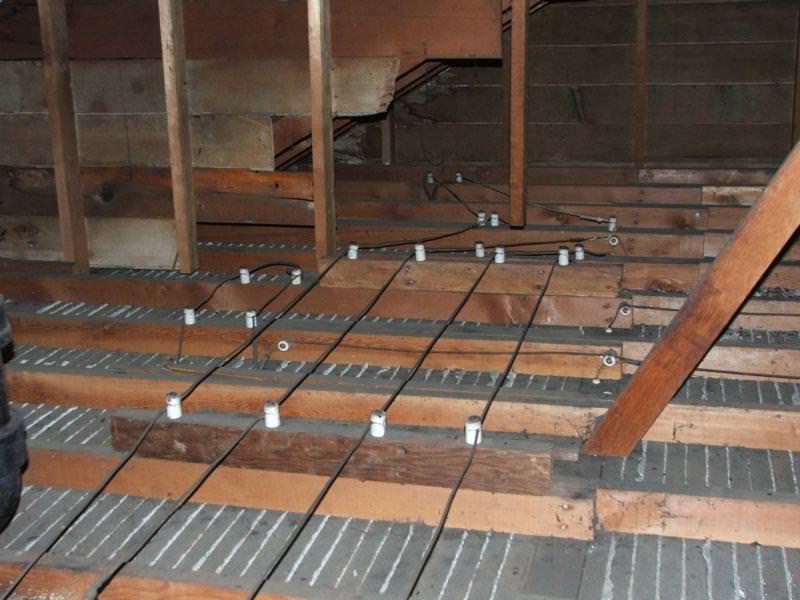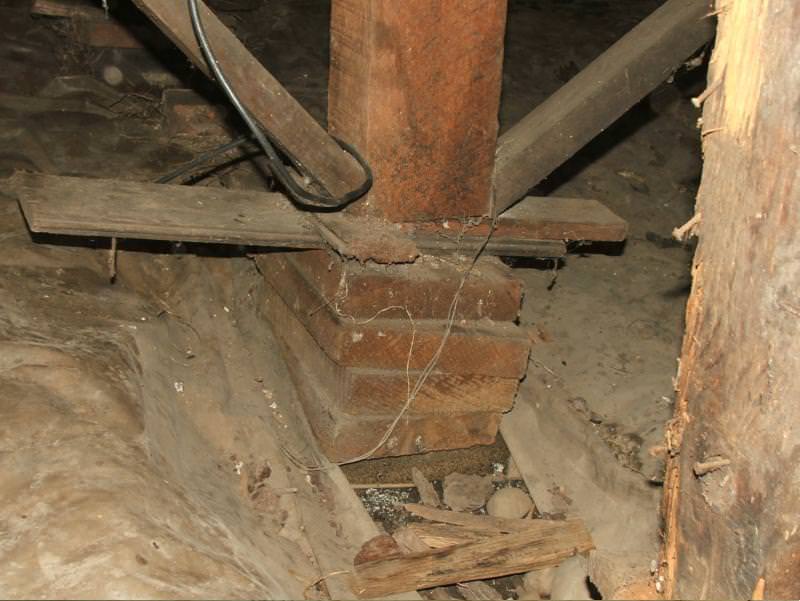A common phrase that inspectors hear is: “but it has been that way for a gazillion years, what is the problem?” Very few “physical objects” get better with age. Getting better with age is left pretty much to the psychological—like friendships.
Knob & Tube wiring, while being an excellent method of wiring in its day, is not likely getting any better with age in your hot attic—-especially with Rocky the Rodent eating the covering off of it. And certainly not with the bathroom receptacle improperly spliced into it—-and the teenage sisters trying to dry their hair at the same time.

That old octopus furnace in the basement that was converted from coal to oil 69 years ago and then to gas 20 years ago is not likely improving with age either. It does look pretty cool though!

The furnace pictured above, being original to the house, is likely 102 years old. It may be growling away in the basement, providing plenty of heat to the home, but the black soot at all the registers is not likely a good sign.
Here is the permit for the coal to oil conversion from 1939 that was tacked to the wall near the furnace.

So what about wood in contact with the ground?
In Washington State, as both Licensed Home Inspectors and/or Licensed Structural Pest Inspectors, we report on conditions that are conducive to wood destroying organisms. One such conducive condition is untreated wood in contact with the ground—-or even too close to the ground. Certainly wood structures of the home that sit directly on the ground fit this requirement.
If it is new construction I can tell my buyer that this wood will decay in a month, or a year, or ten years. What do you tell them when it has been in contact with the ground for 107 years? Sometimes the right soil conditions can be very forgiving of wood. Sometimes wood just gets lucky. Typically wood in contact with the ground in the North West does NOT get lucky!
The wood supports for this crawl space post have been in direct contact with the ground most likely for the life of the home—-107 years. No concrete footing—-no moisture separation. In 1901 they might not have even known what a moisture barrier was. This support has withstood several major earthquakes, 107 years of rainy seasons, and showed only minor decay at the time of inspection—-the minor decay most likely due to the nasty looking ground cover that had been added around the support. The ground cover helps to focus moisture toward the wood support, “improving” the chances of decay, but not life expectancy.

So the question is only as to under who’s watch the wood will start returning to the earth.
****
Charles Buell, Seattle Home Inspector
If you enjoyed this post, and would like to get notices of new posts to my blog, please subscribe via email in the little box to the right. I promise NO spamming of your email